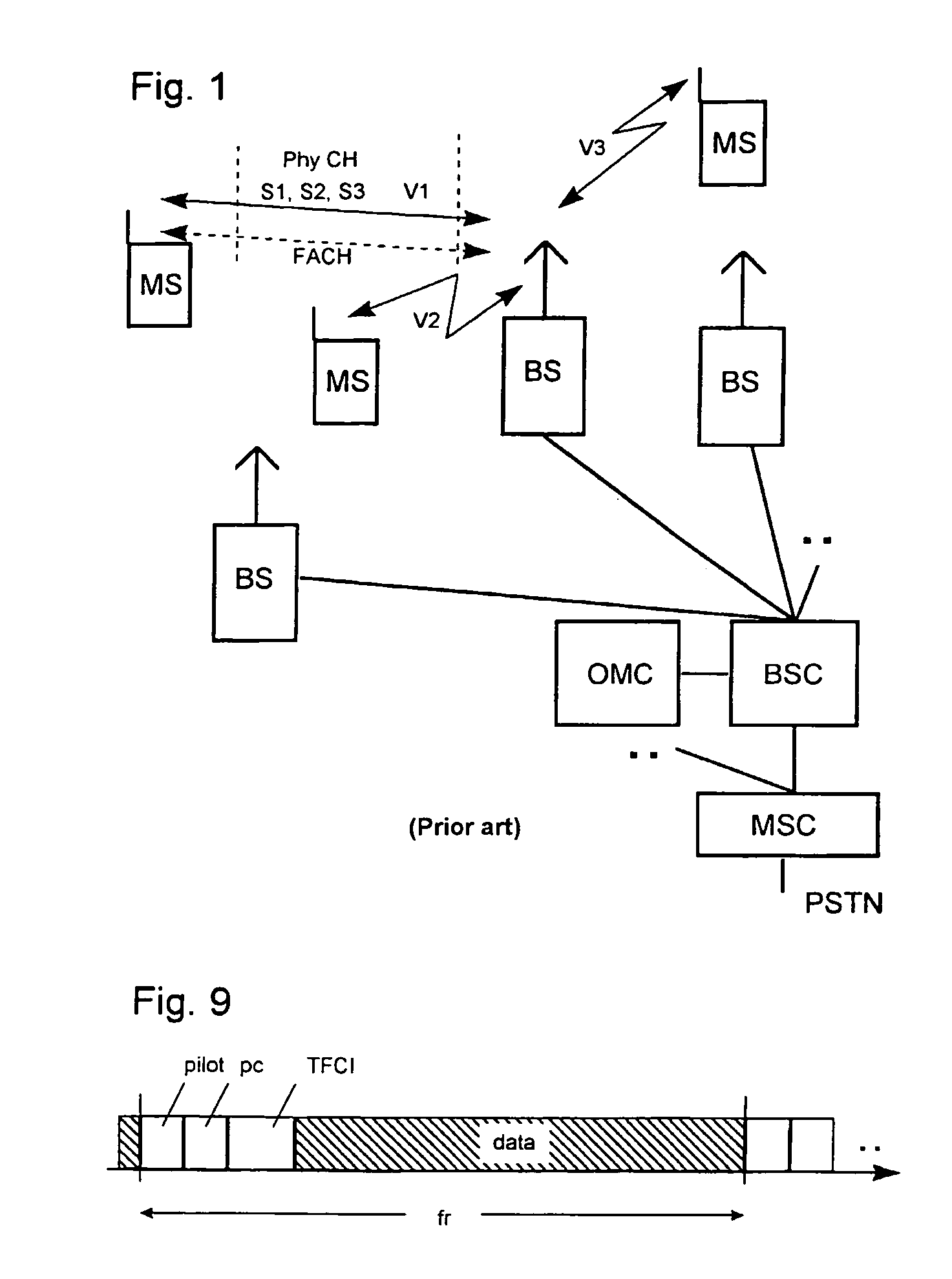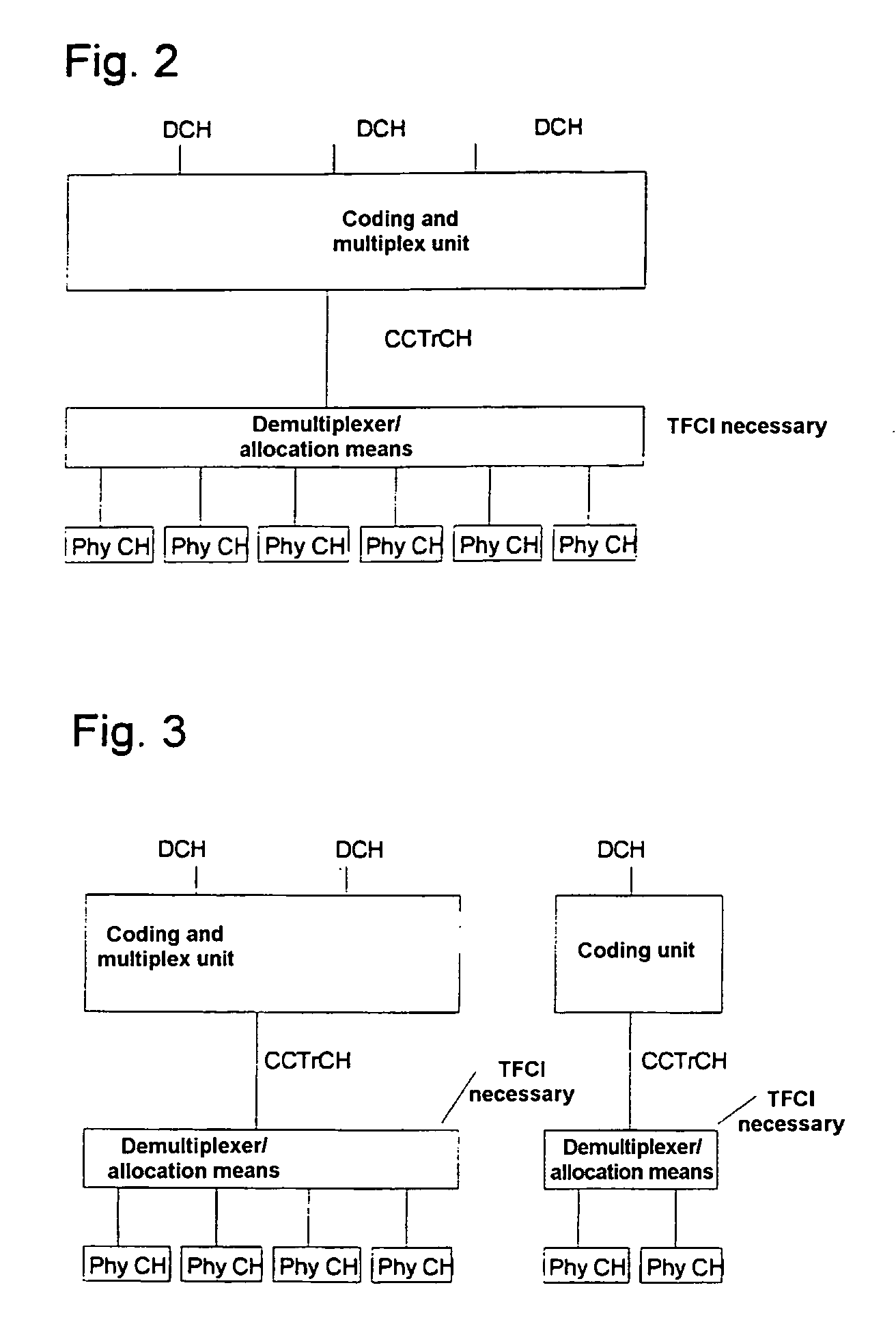Methods and apparatus for transmitting data in a radio communication system including signaling allocation of a common channel
a radio communication system and data technology, applied in multiplex communication, orthogonal multiplex, assess restriction, etc., can solve the problems of not being able to allocate to all subscribers, more difficult to support variable data rates, and limited number of orthogonal spread codes useful, so as to save transmission capacity
- Summary
- Abstract
- Description
- Claims
- Application Information
AI Technical Summary
Benefits of technology
Problems solved by technology
Method used
Image
Examples
Embodiment Construction
[0037]The mobile radio system shown in FIG. 1 as an example of a radio communication system comprises a multiplicity of mobile switching centers MSC (although only one Mobile Switching Center is shown in FIG. 1 for illustrative purposes) which are interlinked and set up access to a landline network PSTN. In addition, these mobile switching centers MSC are connected to at least one respective device Radio network manager RNM (which is also known in the art as a Base Station Control, as indicated in FIG. 1), for controlling the transmission resources. Each of these devices RNM permits, in turn, a connection to at least one base station BS.
[0038]A base station BS can set up a connection to subscriber stations, e.g. mobile stations MS or other mobile and stationary terminals, via a radio interface. Each base station BS forms at least one radio cell. FIG. 1 shows connections for transmitting user information between a base station BS and mobile stations MS. Within a connection VI, data f...
PUM
 Login to View More
Login to View More Abstract
Description
Claims
Application Information
 Login to View More
Login to View More - R&D
- Intellectual Property
- Life Sciences
- Materials
- Tech Scout
- Unparalleled Data Quality
- Higher Quality Content
- 60% Fewer Hallucinations
Browse by: Latest US Patents, China's latest patents, Technical Efficacy Thesaurus, Application Domain, Technology Topic, Popular Technical Reports.
© 2025 PatSnap. All rights reserved.Legal|Privacy policy|Modern Slavery Act Transparency Statement|Sitemap|About US| Contact US: help@patsnap.com



